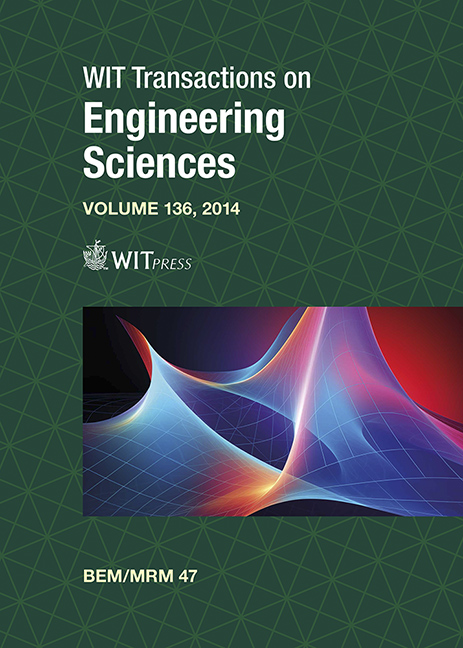NODE LOCATION OPTIMIZATION AND INQUIRY INTO GEOMETRY-PRESERVING VERSUS ISOPARAMETRIC FORMULATION IN THE COLLOCATION BOUNDARY ELEMENT METHOD
Price
Free (open access)
Transaction
Volume
136
Pages
12
Page Range
3 - 14
Published
2024
Paper DOI
10.2495/BE470011
Copyright
Author(s)
NEY AUGUSTO DUMONT
Abstract
This paper might have a subtitle, ‘– homothetic node and element generation along boundary patches’, with the justification ‘to simplify and speed up the numerical simulation’. We have recently laid down the theoretical basis for the consistent formulation of the collocation boundary element method, as it should have been conceived from the beginning. We proposed a convergence theorem for two- and three-dimensional problems of elasticity and potential, which applies to arbitrarily curved elements in the frame of an isoparametric analysis. We also showed that arbitrarily high precision and accuracy may be achieved in the code implementation for two-dimensional problems – limited only by the machine’s capacity to represent numbers. On the other hand, there still is the cost–benefit question – considering that the mathematical governing equations are adequate for representing the physical phenomenon – of how to improve a real problem’s simulation without increasing the number of degrees of freedom. The first possibility is to increase the polynomial order of the interpolating functions (p-refinement). The second possibility is with local, adaptive, h-refinement of the discretization mesh. We may also attempt to optimize the geometric location – inside a boundary element – to which the problem’s primary parameters are attached. Independently of that, an isoparametric formulation may fail to reproduce the exact geometry of the idealized physical problem. Since, for two-dimensional problems, we have the boundary element formulation under control regarding all numerical evaluations, we assess how an isoparametric analysis – with the introduced elegancy of a convergence theorem – compares to a formulation that preserves the problem’s idealized geometry but is not isoparametric, in general. We present the conceptual formulation, code implementation, and numerical illustrations that go from the simple case of an infinite plate with a circular hole to very challenging – physically unrealistic but mathematically conceivable – topological applications.
Keywords
consistent boundary elements, collocation, isoparametric analysis, isogeometric approach, node location optimization, homothetic mesh refinement





